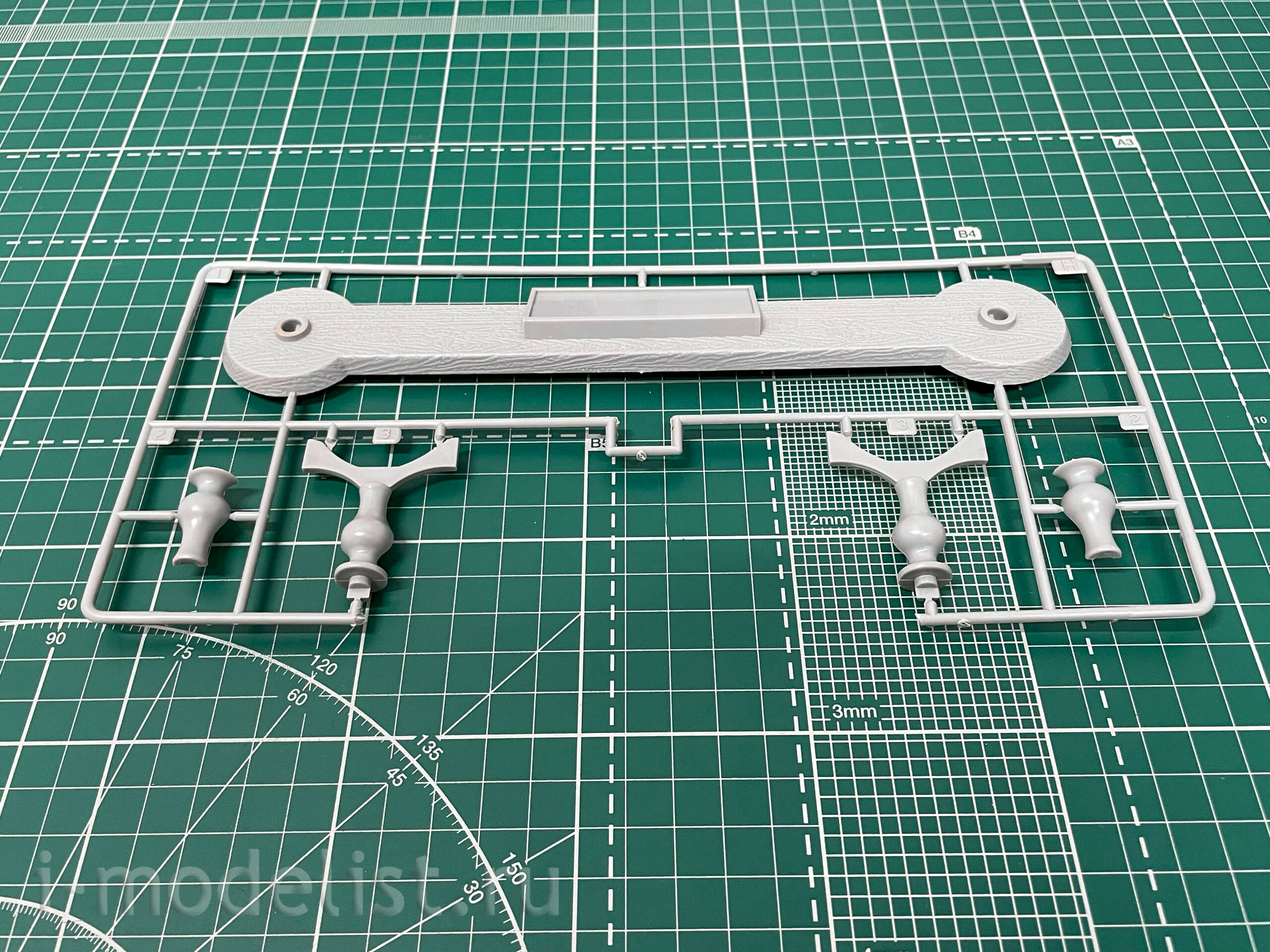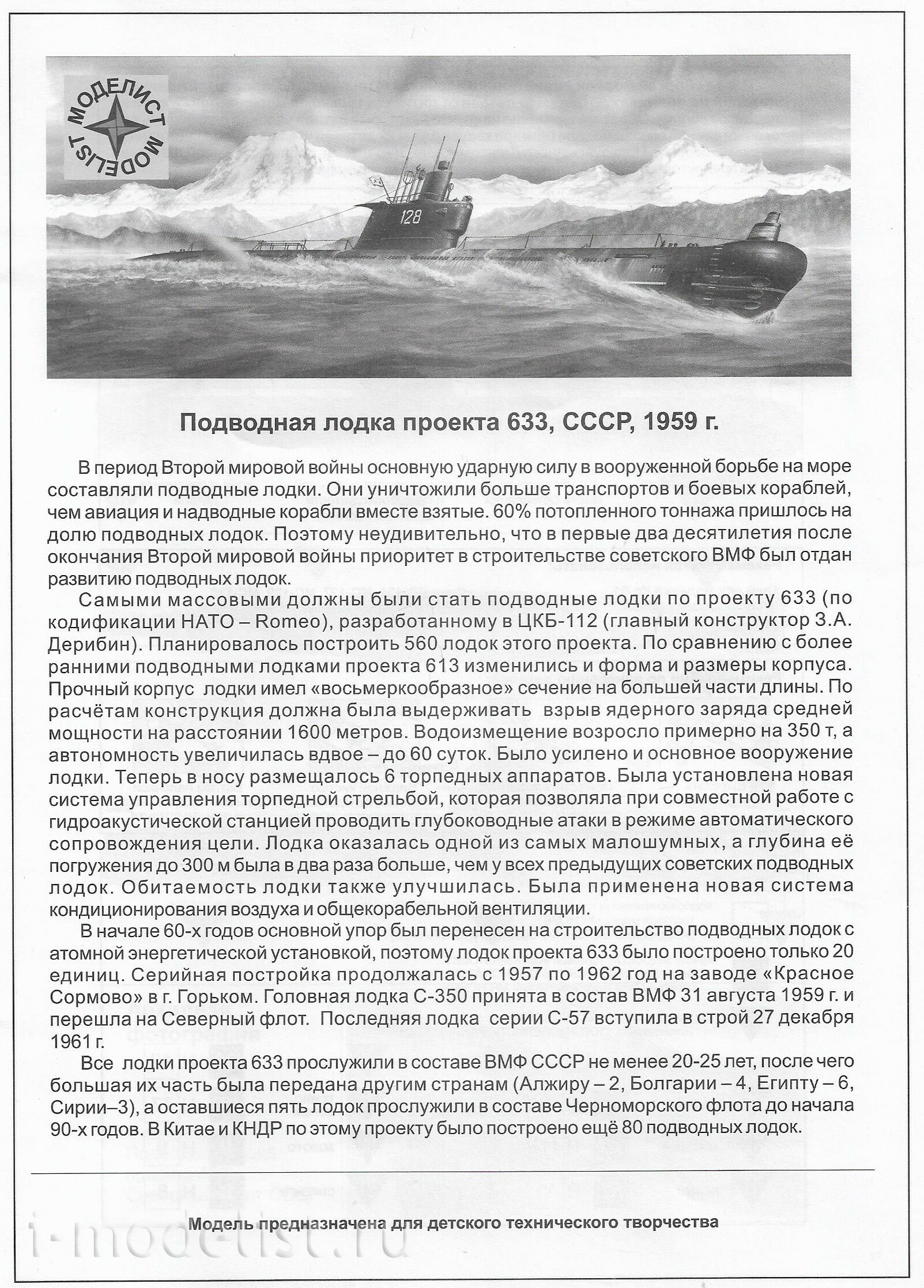Additional Information
the Main striking force in the armed struggle at sea during the Second world war were submarines. They destroyed more transports and warships than aircraft and surface ships combined (60% of sunk tonnage, mostly merchant, accounted for submarines). Therefore, it is not surprising that in the first two decades after the Second world war, the priority in the construction of the Soviet Navy was given to the development of submarines.
In the 50s, the basis of the submarine forces of the Soviet Navy were diesel-electric boats project 613. In the creation of these SP was taken into account as much as possible the German experience, in particular, the famous boats XXI series. Design PL Ave 613 was requested CDB-18 (now CDB marine engineering "Rubin"). The technical project was approved in August 1948, and in 1950 began mass construction. For seven years, 215 boats of this project were built. Quite simple in the device and reliable diesel-electric SUBMARINE was loved by Soviet submariners. With all the simplicity of the equipment, it was one of the lowest noise diesel boats of the Soviet Navy, and the depth of its immersion was doubled compared to all Soviet SUBMARINES built earlier.
Further development of depl PR. 613 was its improved modification – depl project 633. The project of this boat was also developed in CDB-18 (Rubin). Compared with the PL PR. 613 changed the shape and size of the hull – durable boat hull was made, as well as on PR. 613, all-welded, divided into 7 compartments, but had an "eight" section on most of the length, and PL PR. 613 – only in the area of batteries. Boat Ave. 633 became longer by 0.8 m, wider – by 0.7 m, its displacement increased by about 350 t, and autonomy doubled – up to 60 days! In addition, it was strengthened and the main armament of the boat – now in the bow end was placed not 4, but 6 torpedo tubes. A new torpedo firing control system was installed on the boat, which made it possible to conduct deep-sea torpedo attacks in automatic tracking mode when working together with the sonar station.
PL project 633 was also different from PL PR. 613 and many other improvements that increased the reliability of systems and mechanisms and ease of maintenance. The habitability of the boat has also improved (in particular, a new air conditioning and General ventilation system has been applied).
Thus, PL PR. 633 became a worthy successor of the boat PR. 613. After the war, it was planned to build 560 boats of this project. But in the early 60-ies the main focus was shifted to the SUBMARINE with a nuclear power plant, so the project 633 boats were built only 20 units. Serial construction lasted from 1957 to 1962 at the plant "Red Sormovo" in Gorky. All these boats served in the Soviet Navy for at least 20-25 years, after which most of them were transferred to other countries (Algeria – 2, Bulgaria – 4, Egypt – 6, Syria–3), and the remaining five boats served in the black sea fleet until the beginning of the 90-ies., while three of them (two were rebuilt on prospect 633RV, and one – on prospect 633X) were used in the 475-th Feodosia division of weapons testing. Large series of boats of the project 633 were built in China and North Korea (after the boat of 613 PL Ave. 633 became the second Soviet boat, the project of which was implemented abroad).
| Performance characteristics | |
| Displacement, t | |
| surface | 1330 |
| underwater | 1730 |
| maximum Length, m | 76.8 |
| maximum Width, m | 7,3 |
| Sediment by KVL, m | 5.5 |
| Full speed, km | |
| surface | 16.0 |
| underwater | 13.0 |
| working Depth,m | 170 |
| Range, miles (km) | |
| Above water | 9000(9) |
| Under RAP | 4500 (8) |
| Underwater | 353 (2) |
| Crew | 54 |
| Autonomy | 60 days |
| Armament | 6 - 533 mm bow torpedo tubes (12 torpedoes) 2 – 533 mm stern torpedo tubes (2 torpedoes) |
Caution! Glue and paints are not included.
The configuration and appearance of the model are subject to change without notice.













